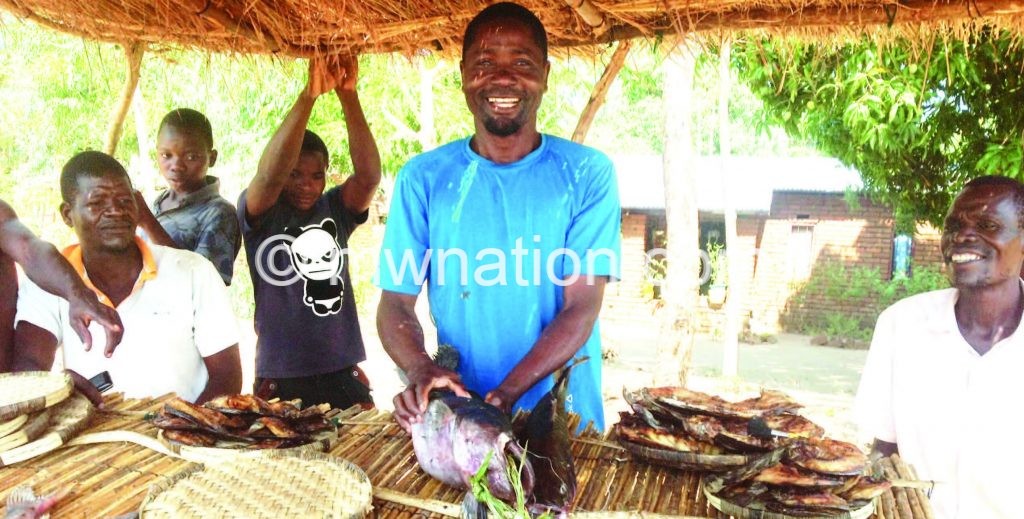Chia Lagoon at crossroads
Thirty-nine-year-old Lydia Phiri doesn’t bat an eyelid when asked about using Chia lagoon for fishing and rice growing.
“Rice,” she replies, winnowing her winter. “There is no fish anymore. Now, we just have to use this God-given resource for other purposes.”

Her community around the lagoon in Nkhotakota District has for decades relied on the area for fishing as a means to earn a living, but catches have continually dropped.
For a decade, Phiri has been selling fish at Chongole, but this dry season she joined her counterparts in cultivating on the lagoon’s basin.
The continued decline of fish catches is attributed to a combination of environmental factors and overuse of the lagoon by communities around it.
“Fish population has continually declined despite efforts to conserve it. Just look around, almost everyone is growing rice and other crops,” says Phiri.
She argues that if an alternative source of livelihood is given to the surrounding communities, the lagoon can be saved.
A good percentage of the rural labour force around the basin is smallholder farmers mainly involved in dry-land crop production, but often owning some livestock.
Much of the northern part of the basin is well suited to livestock production and the grazing activity is closely linked to flooding.
Customarily, livestock is herded along the banks, where they find the best pasture and water supply, and move progressively onto the floodplain as the floodwaters recede.
The availability of good-quality pasture in the late dry season is especially important, and depends upon prolonged flooding during the wet season.
History
According to locals, the 17-square kilometre lagoon was formed at the start of the century after the area experienced some flooding.
For generations, the lagoon has provided water for people, animals and agriculture. Thousands of people depend on the vitality of the water body, including floodplains.
These are highly productive and biologically diverse ecosystems, fed by seasonal floods.
A vital lifeline, the river’s annual floods both fertilise and water crops in the buffer gardens of subsistence farmers.
The floods also nourish grazing lands along the basin as well, supporting livestock and small-time herders.
Locals depend on the vitality of the wetlands of the lagoon, whose outputs of fish and crops such as rice are directly proportional to the flood extent.
Moreover, during the dry season, wetlands become a magnet for livestock farmers. But as its flow has dwindled, attributed to climate change, the lagoon’s productivity is under threat.
A troubled basin
Phiri says farmers living near the banks traditionally own two or more portions of land, one in the lake bed or floodplain margin and the other some distance away, beyond the floodplain.
“Plots close to the banks are used for flood recession farming, especially in the dry season. Both annual and perennial crops are being cultivated.
“However, cultivating around the lagoon’s banks threatens the fragile water body which is also a breeding area of some fish species,” she says.
Challenges around Chia Lagoon vary from lack of access to water despite the abundance of it in the vicinity, to dry spells, floods, and animal and human conflict.
The area lacks development initiatives to help communities adapt and remain resilient in the face of the various shocks and stresses.
More recent projections, cited by the district fisheries department, indicate that the water body will experience still drier and more prolonged droughts and even bigger floods in years to come.
“We are really in trouble if we don’t take action in time,” says Hatib Chilima, a fishmonger. “Flood recession is all to blame for this mess.”
He says if the status quo remains unchecked, the lagoon will dry up completely.
“For people in the basin who are dependent on fishing, drought conditions increase the likelihood of sustained conflict, especially among the poorest communities,” says Chilima.
Fishing
Commercial fisheries as well as fishing for food make up another important aspect of Nkhotakota District’s economy.
Communities by the Chia lagoon fish extensively from it and many artisanal fishers travel from far afield to fish.
Lucksuna Abibo says the drastic reduction in the flow of the river has affected subsistence fishers who fish with rod and line or traps.
“Reduced fish catches results in reduced income to us. We solely depend on the lake for our living and the situation is dire,” he says.
Abibo observes that the development has prompted people to resort to cultivating around the lake to sustain their livelihoods.
“We are living on an island. We have Lake Malawi on the eastern side while the lagoon lies on westwards. The soils are poor but we can cultivate cassava,” he says.
Mitigation
District fisheries officer Symon Ngwira says the lagoon is poised to dry up dramatically due to human activities surrounding it.
So far, it is estimated to be 4-6 metres deep.
“So far, we cannot tell the exact depth of the lagoon because it changes as a result of siltation. The water quality is poor due to deposition of fertilisers which are harmful to aquatic life,” Ngwira says.
He says cleaning the organic debris piling in the lagoon may cost the taxpayer millions but suggests the need to re-demarcate the buffer zone.
Says Ngwira: “With support from stakeholders, we would like to re-demarcate the area so that it is protected from being encroached. Again, we are also drafting a management plan for the lagoon.”
Meanwhile, Ripple Africa and Pact Malawi are implementing a fish conservation project aimed at boosting fish productivity in the lagoon by engaging people on the importance of conserving natural resources.
The project seeks to provide fishing communities with opportunities to start other business enterprises to reduce overdependence on fishing.
But as the dilemma lingers on, people around the lagoon face the obstacle of balancing these competing interests.





